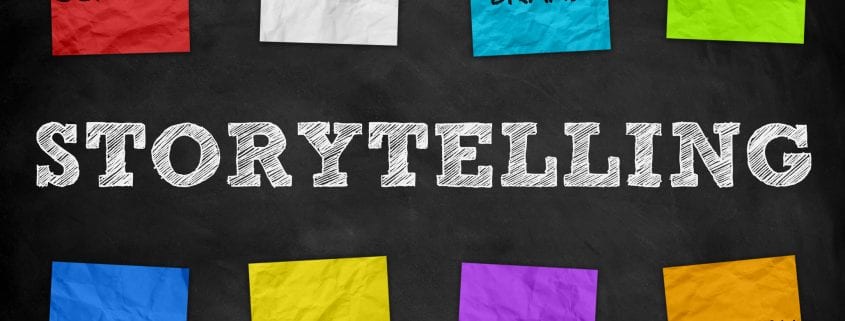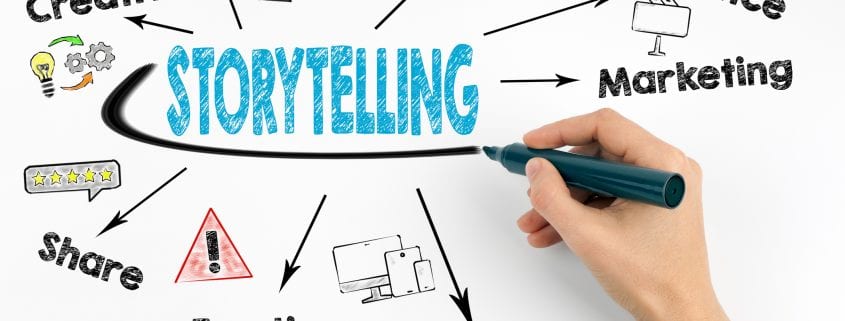
5 Storytelling Techniques You Should Use For Your Marketing Efforts
When it comes to any type of marketing effort, engaging your audience is of utmost importance. Keeping your audience interested is probably the biggest challenge. If they lose interest, they’ll become difficult to convert. To ensure that your audience remains engaged, you need to use the power of brand storytelling for your marketing efforts.
Why is Storytelling Crucial to Marketing?
Consuming information without context is rarely interesting or engaging. Think about how it felt to go to school and study for tests. Few students actually enjoy doing this. On the other hand, almost everyone enjoys watching TV shows or going to the movies. The reason is simple: if information is presented using storytelling, it becomes more enjoyable and easier to retain.
Think about it this way: let’s say you’re talking to a friend. Your friend is explaining how they just bought a new blender and they’re going over all of its features. Sounds boring, right? That’s because it is. However, what if they explained how they had to go on a diet because their doctor told them they were on the brink of having a heart attack? What if a friend recommended that they begin making healthy juices and smoothies? What if their original blender exploded everywhere the first time they tried to use it?
At this point, you’re invested in their story and you’re interested in how their new blender solved their problem. This is because they kept you engaged using storytelling instead of just dumping information with no context into your lap. And that’s how marketing works as well.
5 Storytelling Techniques for Marketing
There are many different storytelling techniques you can use to boost your marketing efforts. Here are five techniques that you should be sure to implement to boost your storytelling capabilities:
1. Always put your audience first
To truly engage your audience, you need to make sure that you understand their perspective. If they don’t feel like your content is tailored specifically to them, they’ll feel disinterested and tune out. As such, the protagonist in your story needs to either be them or represent them. Your story should revolve around their pain points. To ensure that you create content using their perspective, you’ll need to develop buyer personas.
2. Use traditional story structure
If you want to build a better story, consider doing what Hollywood films do: they stick to traditional storytelling structures. Such stories include a beginning, middle, and end. In the beginning, the character is introduced along with the inciting incident (the problem that needs to be solved). Their journey towards solving the problem and the struggles they face in doing so is detailed in the middle. In the end, there’s a climax and resolution.
Using traditional story structure is smart because people are familiar with it — and most importantly, they’re comfortable with it.
3. Make sure the conflict is clear
Any good story needs to have conflict. This is especially true for your marketing stories. The best way to ensure that there’s enough conflict is by making sure that the stakes are high enough. The protagonist must be facing a seemingly impossible challenge, and only with hard work will they be able to triumph at the end. For example, let’s say that one of your buyer personas wants to lose weight. They’ve been told by their doctor that they have to lose weight immediately or they risk health issues, making the stakes high.
4. Keep the format in mind
Writing for the page is much different than writing for video. People read things differently than they say them. Don’t write your content the way you speak as it will likely come off as unprofessional. On the other hand, don’t write the dialogue for a video the way you’d write a blog post because it won’t sound natural.
Effective storytelling is dependent on the voice and one being used, so be sure to keep the format you’re using in mind.
5. Pacing is essential
Pacing is arguably the most important element of a successful story. Poor pacing can make your story uninteresting even if it contains all the elements of a traditional story structure.
Make sure your story is always moving at a steady pace. For example, if you’re writing a 1,000-word case study about one of your products, then the inciting incident should be explained in the first paragraph. If it doesn’t show up until halfway through, odds are you’ll have lost a substantial number of readers because they’ve lost patience and nothing has happened story-wise until that point.
Use Storytelling Techniques to Engage Your Audience 
To deliver your brand’s message to your target audience, you will need to be able to engage them on a personal level and keep them interested. The best way to do this is by using these five tried and true storytelling techniques.
Also Read: 5 Storytelling Techniques You Should Avoid








 For
For 














